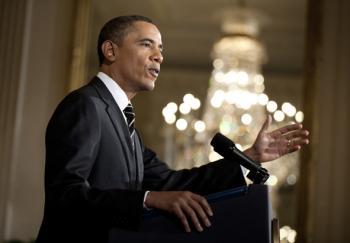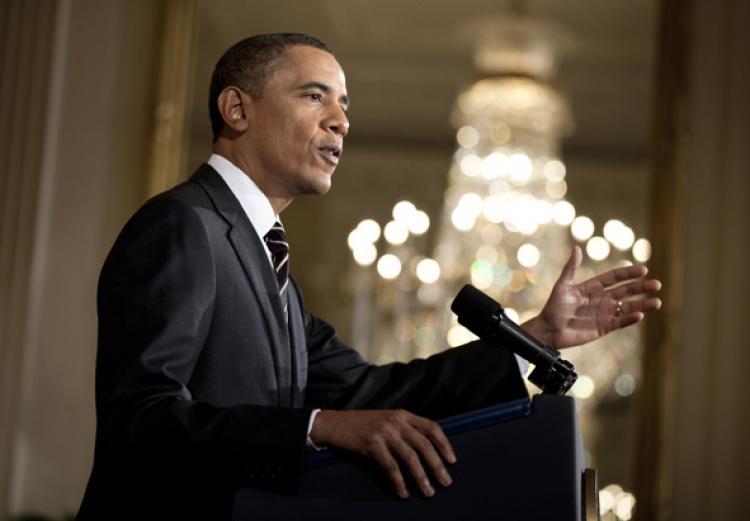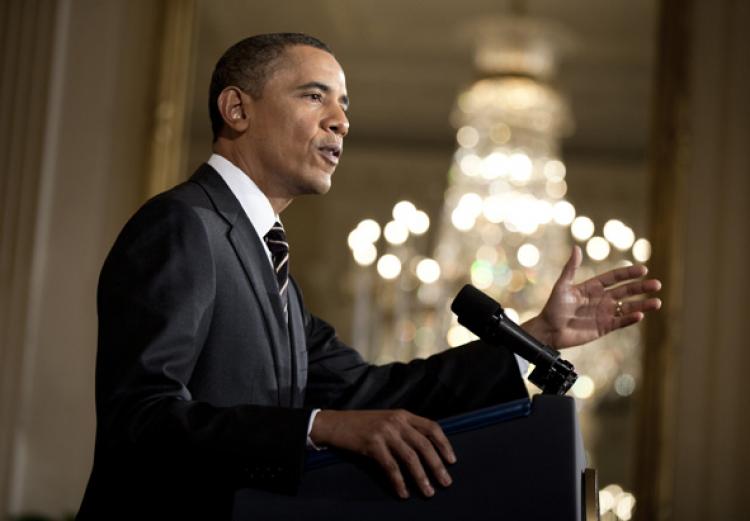A report released Wednesday discussing in detail a key economic indicator—productivity—is just the latest evidence supporting President Barack Obama’s drive for change.
Obama is advocating increasing investments in research and development, facilitating access to higher education and advanced skills training, and spending money to fix the country’s ailing infrastructure. Part of the infrastructure investment includes a national wireless initiative and an information revolution meant to leapfrog the country ahead in global economy.
Many of Obama’s initiatives started in the Recovery Act, which set aside $100 billion to fund research and innovation in areas like clean energy, electric vehicles, and information technology (IT). The president’s policies are aimed at making opportunities accessible to the greatest number of people.
Obama said in his budget preamble that America’s global leadership went unchallenged during the last century. Now, the country’s world standing in all indicators is declining, and the United States faces fierce competition from other countries.
“The winners of this competition will be the countries that have the most skilled and educated workers; a serious commitment to research and technology; and access to quality infrastructure like roads and airports, high-speed rail, and high-speed Internet,” stated Obama.
“These are the seeds of economic growth in the 21st century. Where they are planted, the most jobs and businesses will take root,” he added.
PROGRESS ON PRODUCTIVITY
Without improvements in productivity, young people of today would face lower standards of living than their parents, said James Manyika, director of the McKinsey Global Institute and lead author of “Growth and Renewal, Retooling America’s Economic Engine.”
Manyika was speaking at the New America Foundation on Wednesday to announce release of a new McKinsey report.
The report analyzes productivity as a measure of economic performance and suggests that, more than ever, the United States must invest in productivity to drive growth and competitiveness. On an optimistic note, the report concludes that is the country would be able to meet or exceed productivity levels enjoyed in the past.
Productivity can be boosted either through efficiency gains (reducing input for a given output) or by increasing the value of goods and services produced for any given input.
Specific recommendations encompass reinvigorating innovation economy, developing key talent, building infrastructure, streamlining the business regulatory environment, doing more with existing energy supplies, and taking best practices and replicating them across sectors.
The number one recommendation in the McKinsey report targets the 20 percent of the economy comprising public sectors, including health care and education. The report found that productivity improvements of 5 to 15 percent would bring the sectors on par with similar private sector organizations and result in savings of $100 billion to $300 billion.
Next: Many Americans hold the misconception that productivity gains equal job losses
Many Americans hold the misconception that productivity gains equal job losses, but statistical analysis by the institute found that 69 of the previous 80 years delivered both productivity and job growth.
“Productivity growth is not a job-killer; value-added growth and innovation matters more,” said Manyika.
Productivity gains, such as innovations that improve on existing technologies, actually create opportunities and jobs. The key is how to spur and then fuel significant innovation that benefits Americans directly.
Innovation is a big driver of change and growth: Jobs are created throughout the research and development stages, development within the private sector, deployment, and training. A virtuous cycle is also created through propagation of ideas and investments inspired by technological advancements.
GOVERNMENT SECTORS LAGGING BEHIND
Among the industries that bear the most potential, but also the greatest challenge, for the government are health care and the public sector. The McKinsey report called these “productivity laggards.”
“Around the world, public and regulated sectors persistently lag behind the private sector on productivity growth, imposing a drag on economic growth,” stated the report.
The U.S. government has not reported its own productivity outcomes since 1994, according to the Bureau of Labor Statistics. Therefore, it essentially lacks basic information from which to make measurements. This situation is rife throughout the public sector.
Aneesh Chopra, chief technology officer to the president, said the government is working toward a “sea change in how we think about things.” Referring to IT platforms as “segues into productivity,” he said his colleagues are introducing “innovation after innovation” in this area.
A Feb. 15 announcement by Richard Sorian, assistant to the secretary for public affairs, regarding establishment of seven “early innovator” grants is one example of such innovation. Participating states have agreed to compete in designing consumer-friendly IT infrastructures that will allow customers to make informed health insurance plan purchases online.
Chopra gave an example of a research and development collaboration between the government and a team from Harvard in the area of health care. The joint effort yielded a system—a type of smart platform—that would sit on the top of existing and disparate legacy systems to enable safe transfer of patient data between health organizations. There is currently no system in place to allow easy transfer of personal health records between cities or states, Chopra explained.
“You don’t have to rip and replace current systems” to use this new technology, Chopra said, referring to the concept as “productivity juicing goodness.”







